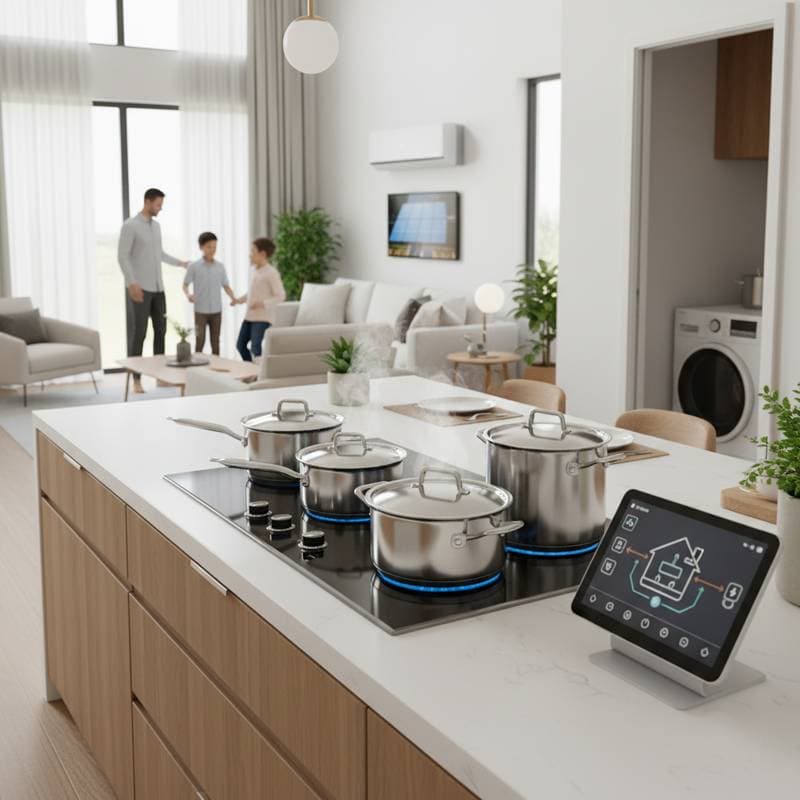Claim $8,000 in Tax Credits for Your 2025 HVAC Retrofit
Utility bills that rise each season reflect more than discomfort; they signal inefficiency in your home's heating and cooling systems. A targeted HVAC retrofit addresses this issue effectively. Federal incentives now allow homeowners to claim up to $8,000 in tax credits for qualifying upgrades, combining immediate financial relief with sustained energy savings.
These credits, part of the Inflation Reduction Act, encourage the adoption of efficient technologies. Upgrading positions you to lower costs while enhancing home comfort. The incentives make this an opportune moment for action.
Key Benefits of HVAC Upgrades
- Homeowners qualify for up to $8,000 in federal tax credits on energy-efficient HVAC installations.
- Eligible systems include high-efficiency heat pumps, air conditioners, and furnaces under the Inflation Reduction Act.
- Expect reductions in energy costs ranging from 25 to 40 percent, alongside long-term utility bill savings.
- Additional rebates and state programs increase overall returns.
- Accurate installation and proper sizing ensure eligibility for maximum incentives.
Qualifying HVAC Systems
Eligibility depends on meeting specific efficiency standards set by federal guidelines. Select equipment that aligns with these criteria to secure credits.
| System Type | Minimum Efficiency Requirement | Potential Credit |
|---|---|---|
| Air-Source Heat Pump | SEER 16, HSPF 9 or higher | Up to $8,000 |
| Central Air Conditioner | SEER 16 or higher | Up to $2,000 |
| Gas Furnace | Annual Fuel Utilization Efficiency (AFUE) 97% or higher | Up to $1,200 |
| Ductless Mini-Split | SEER 16, HSPF 9 or higher | Up to $8,000 |
These standards align with Energy Star certifications. Systems that surpass these levels often deliver superior performance and greater efficiency.
Calculating Financial and Energy Benefits
View an HVAC retrofit as a strategic investment rather than a mere expense. Data from the American Council for an Energy-Efficient Economy indicates that a well-sized heat pump can cut heating and cooling expenses by 30 to 50 percent, influenced by factors such as regional climate and insulation levels.
For a household with $3,000 in annual energy costs, this translates to $900 to $1,500 in yearly savings. When paired with the $8,000 tax credit, payback typically occurs within five to seven years.
Beyond direct savings, efficient systems enhance property appeal. Market data shows that homes with upgraded HVAC features sell 3 to 5 percent faster and at premium prices compared to those with older equipment.
Selecting an Appropriate System
Efficiency ratings alone do not determine the best choice; consider your home's unique characteristics. Factors like square footage, insulation effectiveness, and local weather patterns guide the decision.
- Heat Pumps suit moderate climates, providing dual heating and cooling for year-round efficiency.
- High-Efficiency Furnaces excel in cold areas with high heating needs.
- Ductless Mini-Splits offer targeted control, ideal for homes lacking ducts or requiring zoned temperature adjustments.
Engage a certified HVAC specialist for a Manual J load calculation. This assessment ensures the system matches your home's demands, avoiding energy waste and maintaining incentive eligibility.
Insights from Energy Professionals
Experts recommend integrating HVAC upgrades into broader efficiency improvements. HVAC engineer Linda McAllister notes, “A high-efficiency heat pump stands out as the most impactful upgrade for most homes, yet combining it with enhanced insulation and programmable thermostats yields even greater outcomes.”
Financing options have expanded to support these projects. Low-interest loans designated for energy improvements enable payments over time, allowing immediate access to tax credits.
Such approaches render retrofits feasible for diverse income levels, amplifying both environmental and economic advantages.
Steps to Secure Your Retrofit and Credits
Preparation ensures a smooth process and full credit realization. Follow these steps to proceed effectively.
- Arrange an energy audit to pinpoint high-impact upgrades.
- Obtain multiple quotes from licensed contractors experienced in Energy Star systems.
- Choose equipment certified to meet or exceed federal efficiency benchmarks.
- Maintain detailed records, including receipts, equipment specifications, and installer certifications.
- Submit claims via IRS Form 5695, retaining copies of all documentation.
After installation, review utility statements to quantify savings. Integrate complementary measures, such as smart thermostats or improved sealing, to optimize results.
This retrofit enhances indoor air quality, minimizes environmental impact, and elevates home value. Federal credits facilitate these gains without undue financial strain.
Position your home for enduring efficiency and comfort. The incentives provide a clear pathway to substantial, verifiable benefits.









